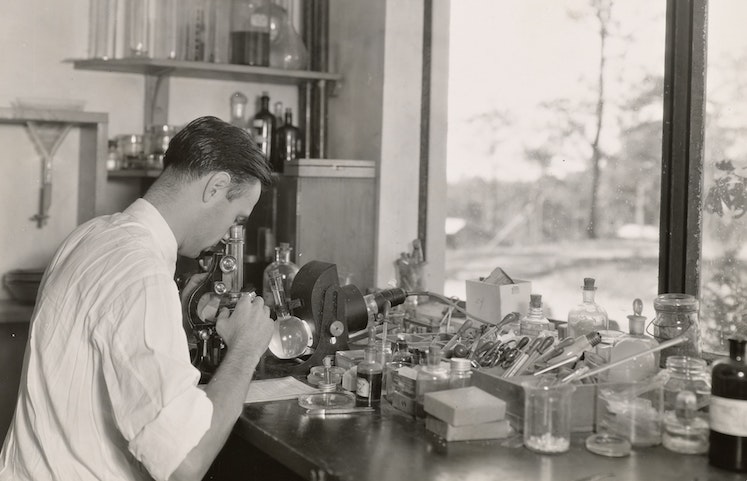Despite their appreciation for all thing fresh and less processed, Americans have a long and historical relationship with packaged foods, food science and technology which, since the turn of the 20th century, have together played a key role in food culture in terms of protecting and enhancing consumers’ lives. Many of the earliest technological advances are now completely taken for granted: pasteurization of milk, for example, came about in the early 1900’s, and products like Kraft Singles, which extended the refrigerated storage life of cheese, came to market just after World War II.
Other social, economic and cultural benefits have been derived from advances in food science and technology, ranging from positive influences on public health, enhanced food security, improved convenience, taste and texture as well as reduced food and beverage costs for both consumers and manufacturers. And yet, when we think of advances in food technology today and measure them along with contemporary food values, we see a more complex picture emerge: Even during the current pandemic, consumers are utilizing a different set of lenses to evaluate foods and beverages, among which includes aspects of health, wellness, sustainability and social justice.
One rapidly expanding sector of foods and beverages that relate to these topics centers on alternative proteins (like “plant-based”), many of which result from advances in processing driven by food technology. In addition to values relating to sustainability and wellness, consumer demand for plant-based options has also been boosted by pandemic-driven events and headlines, including animal protein shortages in food retail and perhaps the most emotionally charged topic of all, the health and safety of employees working in America’s meat and poultry packing plants.
To see what consumers were thinking about emerging protein concepts we examined the topic in our Food & Technology 2019: From Plant-Based to Lab-Grown report, which analyzed their reactions to four emerging protein concepts including: AquAdvantage salmon (genetically modified, faster-growing salmon), cellular dairy (milk made without cows, via fermentation), cellular meat (meat made without animals, grown in a lab) and cricket protein (snacks made with insect protein).
Overall, we found that consumers had strong reactions to these innovative proteins, with few expressing neutral opinions. In fact, how consumers think about innovative foods is influenced by whether they think of them first and foremost as an innovations of the factory, the field, the laboratory, or the kitchen, each carrying its own set of meanings and connotations. Field and kitchen food innovations tend to be the least problematic, followed by those relating to factory and laboratory settings.
Lab-based innovations tend to be associated with the most profound and challenging food changes. Even though disruptive innovations like cellular and insect proteins appear to be logical extensions of consumers’ desire for ethical, healthy, and tasty protein products, consumers see little overlap between these ideas and the current world of meat or dairy alternatives.
When judging food innovations like these protein concepts, consumers tend to assess the acceptability of scientific and technological innovations on a case-by-case basis, weighing up not just “rational” risks and benefits but more culturally driven criteria like the motivations of the producer, the level of transparency they demonstrate, the amount of control they feel they have over the product, and ultimately, how tolerable it feels.
AquAdvantage salmon was the most appealing concept overall, despite the fact that some consumers felt strongly that this concept crossed ethical lines into “playing God” because of connections to genetic engineering.
Similarly, despite the fact that consumers often didn’t see many “real” problems with insect protein, this concept clearly was not appealing to many consumers, overriding all other considerations. Notably, those consumers that purchase plant-based proteins or are early adopters of food and technology innovations were more likely to see the personal, ethical, and environmental benefits of innovative protein concepts.
Our current research continues to see that even during the pandemic, consumption of dairy and meat alternatives has become part of a mainstream narrative of what it means to “eat better” (for themselves, their communities and the environment). Innovators in food science and technology must consider how to position their products in terms of the dominant narratives of what “positive progress” looks like in food culture today, much of which centers on a combination of reconnecting to a natural past and excitement for the future.
Meat and dairy alternatives cover a broad spectrum of production techniques, ranging from plant-based to lab-grown. Understanding how these categories fit into these frameworks of understanding will be crucial to understanding their trajectory and the trajectory of the American diet and food culture as a whole.
Going forward, US food culture is becoming increasingly focused on incorporating culinary (and cultural) diversity, sustainability and wellness into their lifestyle, elements of which include trying ways of eating that move beyond the standard tropes of the American diet (e.g., meat, starch, and a vegetable). This is driving them to seek out new ways to eat, including beyond meat and dairy. However, they also want to achieve culinary and cultural diversity without going too far outside of their comfort zone, skill set, or ability to prioritize time for food preparation.
Related stories:
- The state of sustainability during COVID-19 in the food industry
- The role of functional food and beverage in the era of COVID-19
- Series: How to deliver on what today’s health-conscious food consumers want
As CEO of The Hartman Group, Demeritt drives the vision, strategy, operations and results-oriented culture for the company’s associates as The Hartman Group furthers its offerings of tactical thinking, consumer and market intelligence, cultural competency and innovative intellectual capital to a global marketplace.
_____________________________________
If you enjoyed this article, you can sign up for Consumer Brands SmartBrief or FMI dailyLead to get news like this in your inbox. For even more great news content, sign up for any of SmartBrief’s 275+ free email newsletters today, free.
